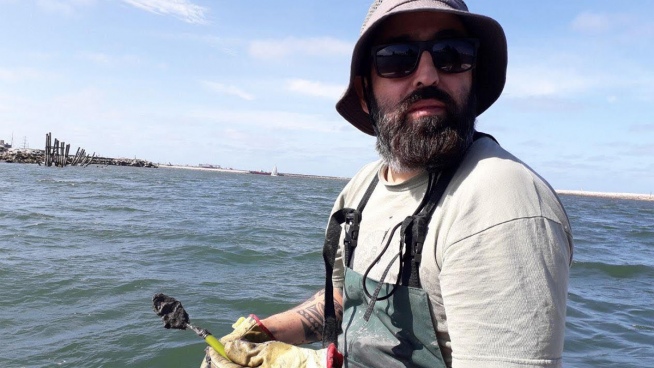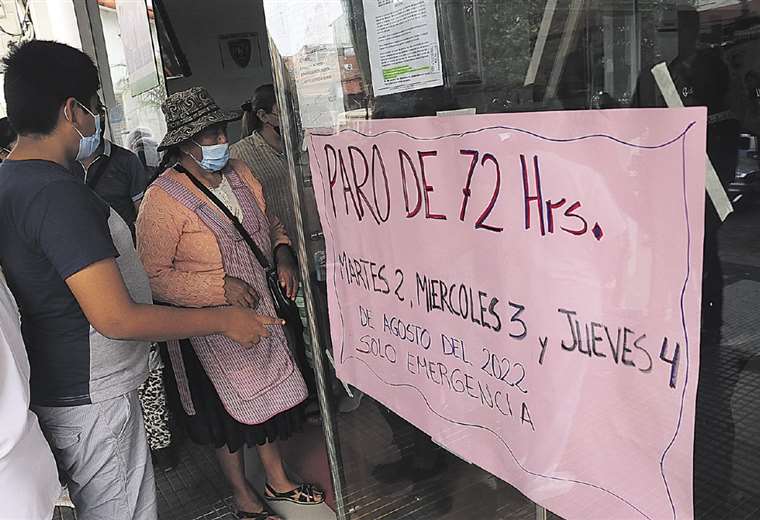In addition to the plastics visible due to their size, national investigations carried out in the Argentine Sea found microfibers in the water and inside the animals, a local reflection of a problem that affects all the oceans where, according to the latest report from the the United Nations Environment Program, it is estimated that there are between 75 and 199 million tons of plastics.
Although they are not perceived because they are less than five millimeters, microplastics are present in all natural environments in the world, to the point that researchers are already talking about a plastic pandemic. in the seas, 85 percent of the waste is of this material that affects animalsto the entire ecosystem and the food chain, according to the global assessment of marine debris by the United Nations Environment Program (UNEP).
Within the framework of the Marine Plankton Dynamics and Climate Change program of the National Institute for Fisheries Research and Development (INIDEP), since 2018 the doctor in biology Rosana Di Mauro has analyzed water samples that are taken every month at the Permanent Study Station Environmental, 50 kilometers from the coast of Mar del Plata. The objective is to monitor the presence of microplastics, among other items and physical-chemical parameters of the water.
“We have many sources of information about what comes with the plankton and with the fish, and we are quite surprised with the amount of microplastics that we are finding, which, although it is variable, does not fall below 10 particles per liter. It is a lot if you compare it with what has been published around the world”, the researcher from the National Council for Scientific and Technical Research (Conicet) tells Télam-Confiar.
To Di Mauro’s surprise: “So far we haven’t found a water or biological sample that didn’t have anything. There are no negative results, they are all positive, it is quite impressive”.

Some of these particles are microfibers in the form of thread, from 0.01 to 5 millimeters, whose sources can be varied such as clothing (from domestic washing), nets and ropes. For more data, according to a review of studies led by researcher Sunanda Mishra and published in the Marine Pollution newsletter, it is estimated that around two million tons of microfibers are released into the ocean each year globally.
Di Mauro adds that in addition to microfibers there are irregularly shaped particles from 0.005 to 5 millimeters. “They are very small – he describes – and they overlap with the plankton that serves as food for many species”.
The situation is repeated in Bahía Samborombón where scientists find microplastics in the stomachs of juvenile fish and in the water. “We are finding fibers and fragments in coastal environments, in open waters, on the surface, at the bottom, in mid-water, we find them everywhere,” warns the biologist.
The concentration of particles in the seas varies depending on different factors such as the sources of waste and the movement of currents that can move microplastics even towards protected areas such as the Burdwood Bank, an underwater plateau located at the southern end of the Patagonian platform, in the southwestern Atlantic Ocean.
Thus, according to the study published in mid-May in the scientific journal Environmental Pollution in which Di Mauro is the first author, microfibers of anthropogenic origin are very abundant in this environment, probably due to the action of the Antarctic Circumpolar Current.
The results indicate that the fibers are widespread throughout the water column with an average of 17.4 particles per liter. According to the publication, 76.1 percent of the microfibers were composed of polyethylene terephthalate (a plastic widely used for packaging and also in clothing) and most had a size between 0.1 and 0.3 millimeters.
The study, in which different Conicet researchers participated, concludes that the microfibers, transported by the currents and retained in the bank, represent a threat to both the vulnerable benthic subantarctic species, that is, those that bury themselves in the bottom or adhere to rocks as “for the highly productive marine ecosystems of the Southwest Atlantic Ocean.” The document adds that “according to the review of the literature, this open-ocean environment could be one of the most polluted places in the world.”
Images of sea lions with nets or bands on their necks or of turtles that die from ingesting bags become increasingly common. but also, in an imperceptible way, microplastics accumulate in the organs of different species.

In a study of corvinas in the Bahía Blanca estuary, the researchers found microplastics in the 20 specimens analyzed and a total of 241 particles. “On average we found 14 pieces of plastic in the digestive tract of corvinas, which are small fish,” explains researcher Andrés Arias from the Argentine Institute of Oceanography (IADO-CONICET) and the Department of Chemistry, Universidad Nacional del Sur.
The study claims that “The average number of particles per fish was higher than that reported in previous global marine studies.” In addition, he points out that “a positive correlation was found between the number of microplastics per fish and the hepatosomatic index, which suggests a probable stress in their health status.” That indicator is used to measure the energy reserves of the animal.
On the other hand, “filtering organisms such as bivalves, molluscs and clams feed on the microorganisms that are in the water and in that filtering they are left with a lot of synthetic microparticles that they cannot degrade and that remain in their body,” adds Arias. .
The results of another analysis of nine juvenile Magellanic penguins from the Argentine South Atlantic that died between February and March of the years 2019 and 2020 during their recovery at the Guillermo “Indio” Fidalgo Marine Fauna Rescue Station showed the presence of microplastics in all samples with an average of 51 particles per individual.
The research was led by the IADO marine biologist, Tatiana Recabarren in which Arias also participated.
“Different studies have shown that exposure to certain concentrations of microplastics has a physical effect on the ability to absorb food, since some species have decreased their energy performance,” says the associate researcher at the University’s Institute of Marine and Coastal Research. National of Mar del Plata – CONICET, Mauricio Díaz Jaramillo.
The doctor in Environmental Sciences draws attention to the need for more work because these particles could also function as a “Trojan horse” for other contaminants that “come from the very manufacture of fragmented plastic or by absorption.”

Díaz Jaramillo studies the presence of pollutants at the level of coastal sediments and areas of importance for conservation or monitoring, such as the tributaries of treatment plants. In his latest research aimed at observing patterns of distribution of microplastics in estuaries of Buenos Aires, he found a large number of paint particles in the strata between 10 and 30 centimeters in the sediments of different areas of the Bahía Blanca estuary.
The researcher explains that these fragments can produce toxicity in species that live on the seabed because antifouling paints, which are used to protect ships from colonization by marine organisms, contain biocides.
For his part, Arias clarifies that “plastic is not dangerous in itself, but its accumulation in places where it does not have to be and where it will not be degraded, is what basically causes its toxicity”. Then, the IADO biologist adds that these fragments also have chemical additives, which “are not added so that a living being eats them because they can dissolve and cause toxicity. So, there is a double toxicity there.”
The UNEP report of October 2021, From pollution to solution. A global assessment of marine litter and plastic pollution estimates that there are between 75 and 199 million tons of plastic in the oceans. In addition to affecting the environment and marine species, the release of chemicals associated with plastics into the oceans “is receiving increasing attention, as some of these chemicals are substances of concern or have endocrine-disrupting properties,” he warns. The document.
The costs of plastic waste
Marine plastic pollution not only affects the environment and health but also the world economy due to its impact on tourism, fishing, aquaculture, plus clean-up costs with a global cost between 6,000 million and 19,000 million dollars in 2018 , according to the UNEP report.
“Plastic is designed to last 200, 300 years, but products are designed that last a few minutes, such as food packaging,” says IADO-CONICET researcher Andrés Arias, a member of the Scientific Advisory Committee on Marine Litter and Pollution. Plastic from UNEP, on behalf of Argentina, and who participated in the aforementioned report.
In a circular system every discarded plastic product should be recovered and recycled. Nevertheless, “every year more is produced and the recycling rate worldwide is less than 10 percent, that’s why a change is necessary”assures Arias.
Like the reduction of greenhouse gas emissions that influence climate change, the transformation requires global commitments. In this sense, on March 2 of this year, authorities from 175 countries approved a resolution in Nairobi to achieve a legally binding international agreement by 2024 and seek to “end plastic pollution.”
Arias explains that the objective is to mitigate the effects of this material by redesigning biodegradable resins, increasing circularity and recycling to reduce production year after year, something that will happen without actions or commitments.
“The final agreement to be signed by the countries is expected to be in the second half of 2025. It seems far away, but in reality we are closer than ever”, concludes Arias.


















